These images, taken between the turn of the 20th century and the 1950s, show how student housing in the US has changed over the past hundred or so years.
The students used a vivid combination of vintage decor, collegiate pennants, high school diplomas, family portraits, and advertisements to decorate their walls.
Why is living on campus so prevalent in the United States, and how do the designs of residence halls reflect American educational and societal ideals? Carla Yanni addresses these questions in Living on Campus, a history of purpose-built structures intended to house students on American campuses.
Dormitory architecture, she argues, “provides a lens through which to examine the socially constructed nature of the student”.
Examining the designs of residence halls reveals how Americans planned these spaces to maintain values about “segregation of races, social classes, and genders” held by benefactors, administrators, architects, students, and society at large.
Additionally, she examines how attitudes about domesticity, community, and student life are revealed in the plans of residence halls.
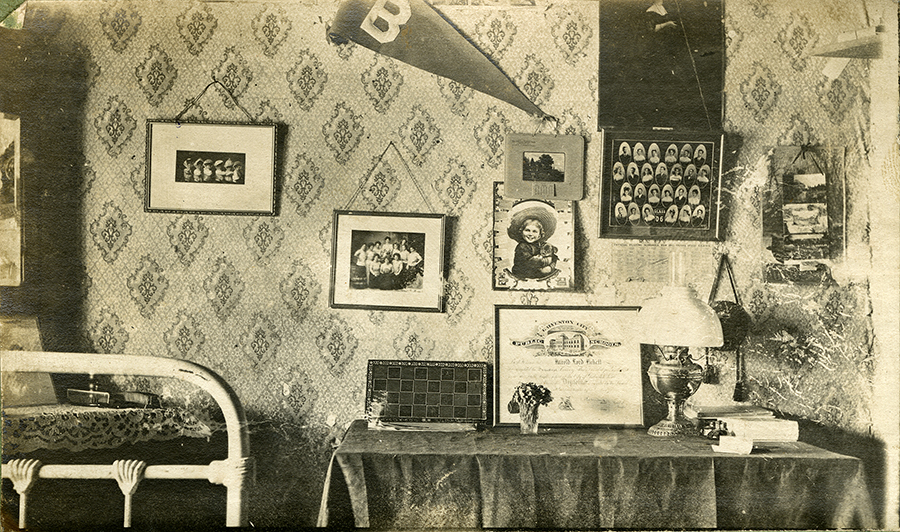
A decorated dorm room at Cowden Hall, Baylor University, ca. 1910.
Monasteries and convents served as models for the dorm and for the campus itself. Walled off from a threatening medieval world, they provided security for contemplation and worship while also serving as a place where learning, the arts, music, horticulture, and other cultural activities might flourish.
Equally important, the residential colleges at Oxford and Cambridge also served as models for Harvard, Yale, and the other American colleges that came later.
In adapting medieval design to the needs of students, college educators and designers struggled to reconcile the need for security, order, and quiet against the need for convivial spaces open to the wider community.
Professor Yanni points out that a popular dormitory plan, the “double-loaded” corridor, made provision for rooms on either side of a very long hallway.
This design, requiring only two staircases at either end of the corridor, was relatively inexpensive to build; it also facilitated a high level of security since it was easy to see who was coming or going.
But for students, the double-loaded corridor had all the charm of a cellblock. The pricier Oxbridge alternative, with provision for stairways throughout the building, enhanced access at the cost of security. Both designs, with modifications, are in use today.
 The term “dorm” is often used in the US. However, within the residence life community, the official term “residence hall” is preferred.
The term “dorm” is often used in the US. However, within the residence life community, the official term “residence hall” is preferred.
According to the University of Oregon, their facilities “provide not just a place to sleep, but also opportunities for personal and educational growth. Highly trained Residence Life staff and Hall Government officers support this objective by creating engaging activities and programs in each hall or complex.”
In the UK, the preferred term in the context of student housing is “halls,” short for “halls of residence.” In English-speaking Canada, the common term is “residence” or “res” for short.
In Australia the terms “halls of residence” and “halls” are common, but “college” (or, more formally, “residential college”) is also used in the cases of halls of residence that are named as such (e.g. Robert Menzies College, Trinity College, and Mannix College); residential colleges commonly have a Christian ethos.

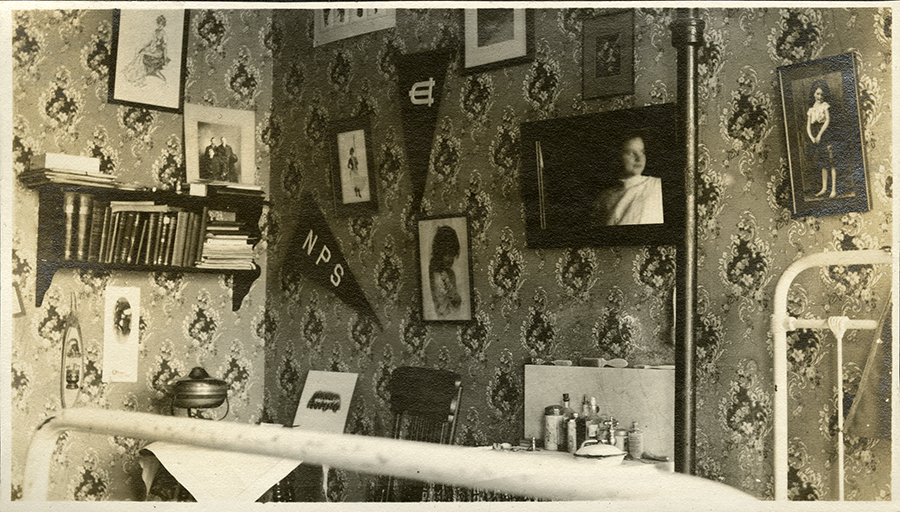
A room’s wall of Baylor dormitory, ca. 1910.

Baylor University dorm room, ca. 1910.

Baylor University dorm room, ca. 1910.

Baylor University dorm room, ca. 1910.

Dorm room at Cowden Hall, Baylor University, ca. 1910.

Male students with pipes in dorm room, Baylor University, ca. 1910.

Three students study in their dorm room, most likely in Georgia Burleson Hall, ca. 1890s.
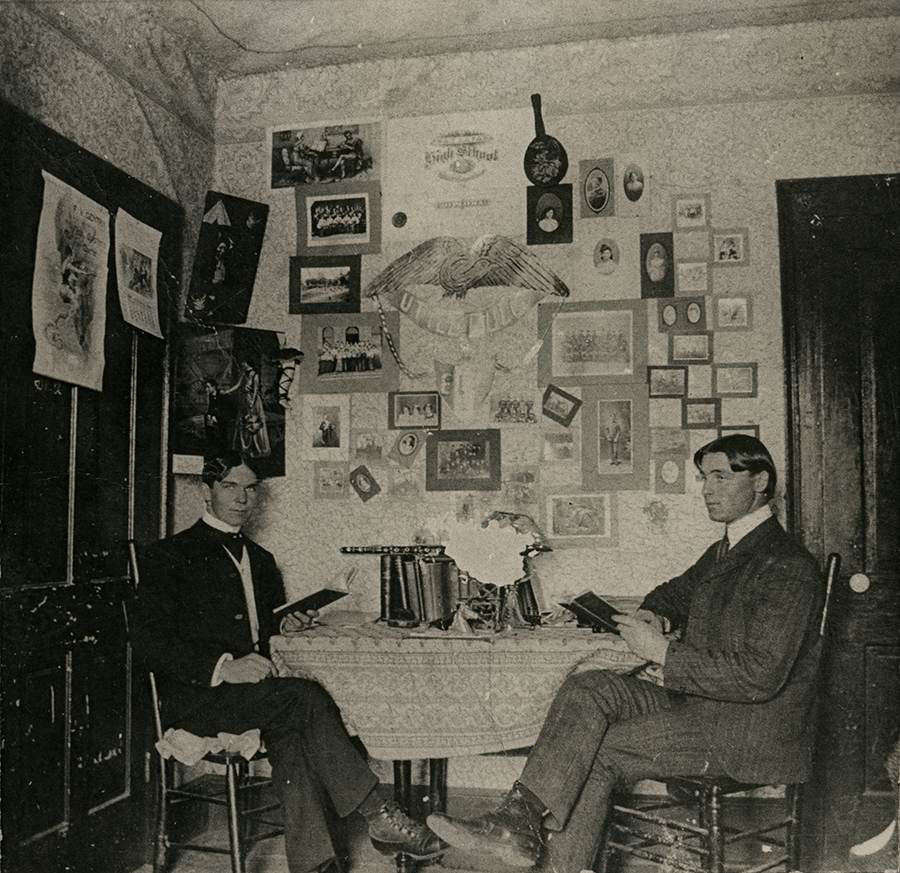
Two students study in their well decorated dorm room, ca. 1890s.
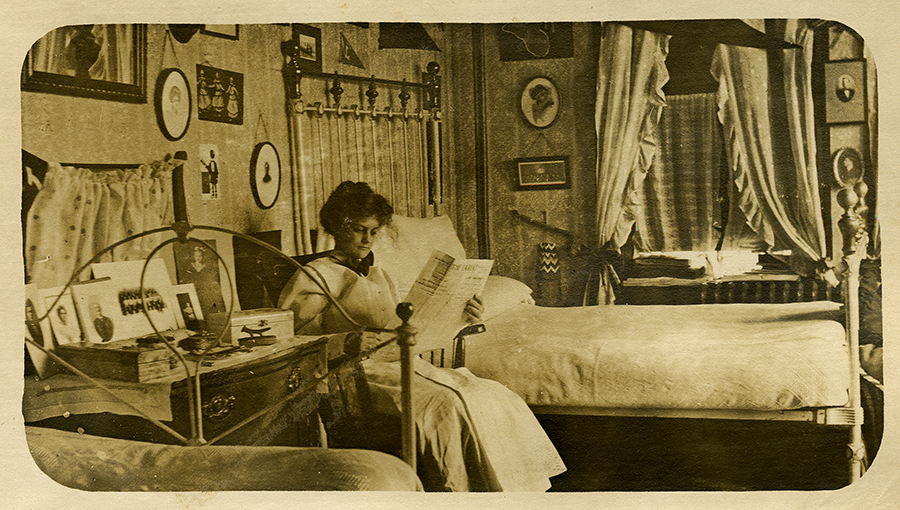
Young girl student reading a newspaper in her room at Georgia Burleson Hall, Baylor University, ca. 1910.
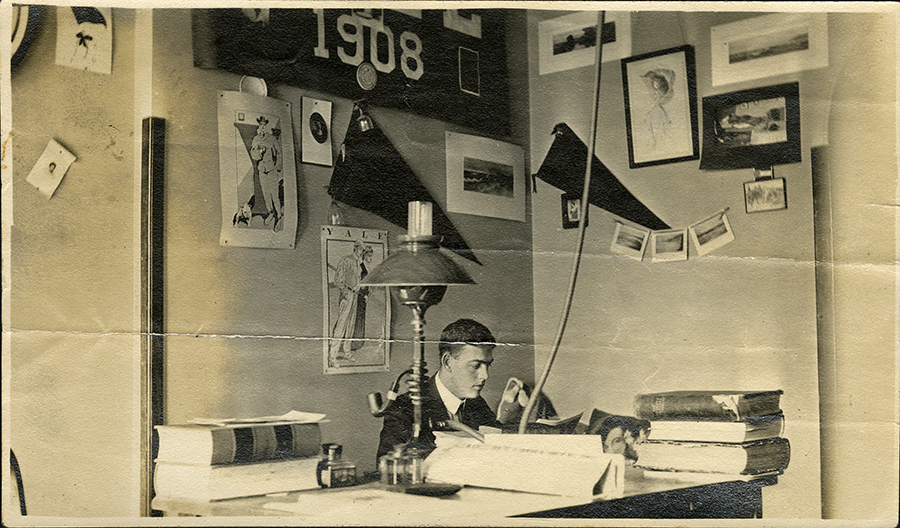
A Baylor student at desk in dorm room, ca. 1910.




















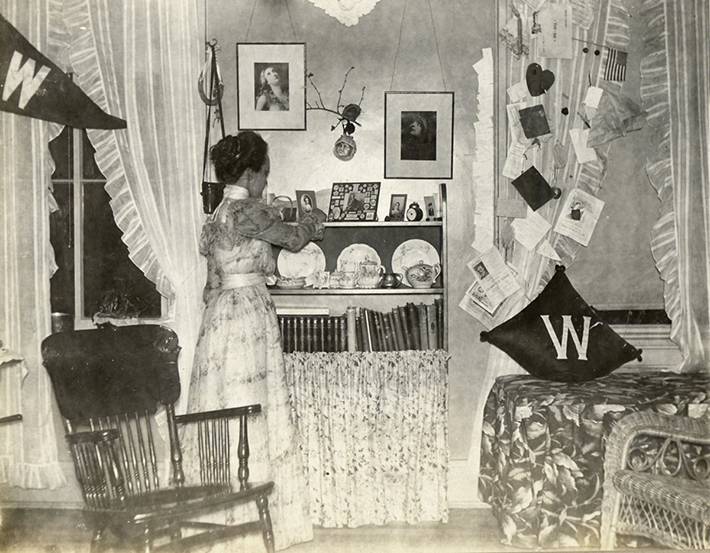
This woman’s dorm room from 1898 isn’t much different from modern day dorms: Pennants, books, and a chair for studying.

Photographs and mementos kept things homey in this room, 1899.

A dorm room in old Chadbourne Hall, ca. 1899.
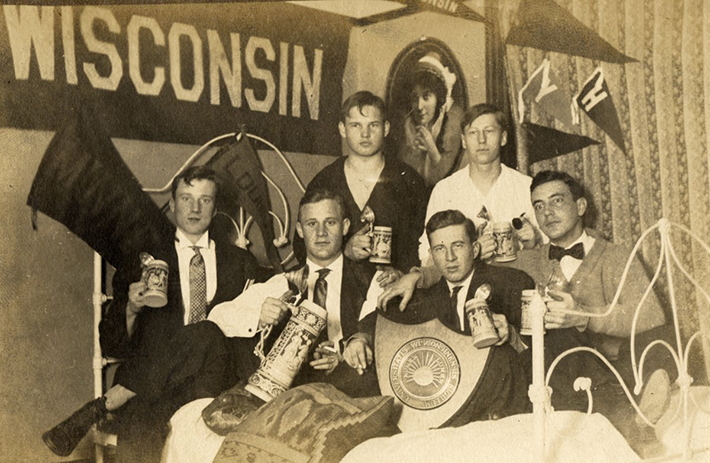
Male students raised a glass in a boarding house or fraternity, 1909.

Male students room in boarding house or fraternity, 1909.
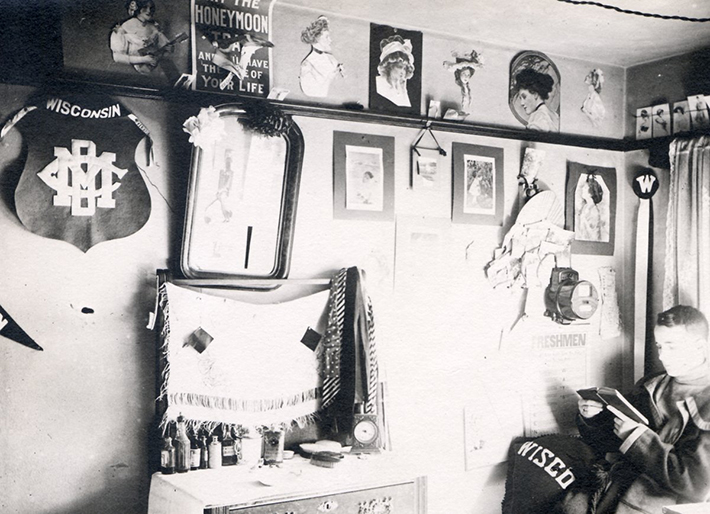
Man sitting in boarding house or fraternity house room reading. Pinups and other decorations on south wall, 1912.

Young student sleeping in a men’s boarding house or fraternity house room, ca. 1912.

This single dorm room from the 1930s appeared to be filled with souvenirs from exotic adventures.

Students studied on bunk beds in this barracks-style dorm, ca. 1945.

Single men’s living quarters, bunks and linens furnished, rent $13/person/month, No smoking. ca. 1945.

Students studied around a communal table, ca. 1950s.

Just a bunch of guys hanging out, eating melon, ca. 1950s.

A record party with Elizabeth Waters Hall residents, ca. 1950s.

Two women in room in Holt Dormitory, 1950s.

A guy studying in dorm room, ca. 1950s.

Two women sitting in mock-up dorm room in Chadbourne Hall, ca. 1950s.
(Photo credit: The Texas Collection, Baylor University / Pinterest / Wikimedia Commons / Flickr / Living on Campus: An Architectural History of the American Dormitory by Carla Yanni, Reviewed By: Mary R. Springer / Architectural and Social History of Dormitories: A Review of Living on Campus).